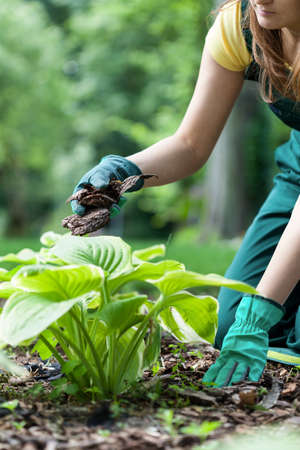1. Understanding the Benefits of Raised Beds
Raised bed gardening has become a go-to method for many suburban and urban gardeners across the U.S., especially those looking to grow more food in smaller spaces. By elevating your garden space, you unlock several advantages that can directly impact the overall yield of your crops. Whether youre working with a small backyard or a tight side yard, raised beds offer flexibility and efficiency that traditional in-ground gardens often cant match.
Improved Soil Quality
One of the biggest perks of raised beds is the control they give you over soil quality. Instead of relying on native soil, which may be compacted or nutrient-poor, you can fill your raised bed with a custom soil mix ideal for growing vegetables. This is especially helpful in areas with heavy clay or sandy soils common throughout many parts of the U.S.
Suggested Soil Mix for High-Yield Gardens:
| Component | Percentage | Purpose |
|---|---|---|
| Topsoil | 40% | Base structure and nutrients |
| Compost | 40% | Adds organic matter and fertility |
| Perlite or Vermiculite | 20% | Improves aeration and drainage |
Better Drainage
Raised beds allow for superior drainage compared to traditional ground-level gardens. This helps prevent waterlogging—a common issue that can lead to root rot and other plant diseases. In regions that experience heavy rainfall or have poorly draining soils, this advantage alone can dramatically increase crop success rates.
Easier Weed Control
Because youre starting with fresh soil in a defined area, weeds are less likely to take over your garden. Plus, the height of raised beds makes it easier to spot and remove any intruders before they spread. Many American gardeners also use mulch or landscape fabric within raised beds to further suppress weed growth.
Ideal for Small Yards and Urban Settings
If youre living in a city or suburb where space is limited, raised beds help you maximize every square foot. You can easily install them on patios, rooftops, or narrow strips along fences. This makes them perfect for vertical gardening techniques and companion planting strategies—both of which well explore in upcoming sections—to boost production even more.
Quick Recap: Key Benefits of Raised Beds
| Benefit | Description |
|---|---|
| Soil Control | Create optimal conditions for plant growth |
| Drainage | Reduces risk of water-related plant issues |
| Weed Management | Easier maintenance and fewer weeds overall |
| Space Efficiency | Makes gardening possible in small or paved areas |
By understanding these foundational benefits, youll be better equipped to build a productive raised bed garden that supports vertical structures and companion planting techniques—setting the stage for maximum harvests season after season.
2. Vertical Gardening Techniques for Small Spaces
When youre working with raised beds, space is often limited. Thats where vertical gardening comes in handy. By growing your plants upward instead of outward, you can fit more crops into a smaller area and improve airflow, which helps reduce disease. Plus, harvesting becomes easier when fruits and vegetables are off the ground.
Why Go Vertical?
Vertical gardening is perfect for small backyards, patios, or any garden with limited square footage. It allows you to take advantage of unused vertical space, making it ideal for climbing plants like tomatoes, cucumbers, and pole beans. You’ll not only save space but also boost your yield per square foot.
Popular Vertical Supports
There are several easy-to-use structures that help your plants grow upward:
| Support Type | Best For | Description |
|---|---|---|
| Trellises | Cucumbers, Peas, Beans | Simple frames made of wood, wire, or metal that support climbing vines. |
| Cages | Tomatoes, Peppers | Circular or square frames that keep bushy or vining plants upright. |
| Vertical Frames | Pole Beans, Squash (with support) | Larger structures that can hold heavier plants using netting or slats. |
Tips for Success
- Secure Your Structures: Make sure trellises and cages are firmly anchored to handle wind and plant weight.
- Choose Climbing Varieties: Look for seed packets labeled “vining” or “pole” rather than “bush.”
- Train Your Plants: Gently guide young vines onto supports to encourage upward growth.
- Mind the Sunlight: Place taller structures on the north side of your bed so they don’t block sunlight from shorter plants.
Crops That Thrive Vertically
The following crops are excellent candidates for vertical gardening in raised beds:
| Crop | Support Needed |
|---|---|
| Tomatoes (indeterminate) | Cages or tall stakes |
| Cucumbers (vining types) | Trellis or netting frame |
| Pole Beans | Teepee or A-frame trellis |
| Peas | Trellis or mesh fence |
| Zucchini (trained) | Sturdy vertical frame with ties |
Quick Tip:
If youre DIY-inclined, you can build simple trellises using wooden stakes and twine. They’re affordable and easy to adjust as your plants grow.
Maximize Every Inch of Your Raised Bed!
By taking advantage of vertical space, you’ll open up room in your raised beds for even more planting. It’s a great way to grow smarter—not just bigger!
![]()
3. Companion Planting Strategies for Higher Yields
Companion planting is a smart, natural way to boost your raised bed garden’s productivity. By placing certain plants next to each other, you can help deter pests, improve flavor, and support healthy growth. Its all about understanding which plants work well together and why.
Why Companion Planting Works
Some plants release natural chemicals that repel insects, while others can improve the soil or provide shade. When done right, companion planting reduces the need for pesticides and fertilizers, making your garden more sustainable and productive.
Popular Companion Planting Combinations
Here are some tried-and-true combinations that work great in raised beds:
| Plant | Best Companions | Benefits |
|---|---|---|
| Tomatoes | Basil, Marigolds, Carrots | Basil enhances flavor and repels pests; marigolds deter nematodes; carrots use space efficiently |
| Carrots | Onions, Lettuce, Tomatoes | Onions deter carrot flies; lettuce offers ground cover; tomatoes provide partial shade |
| Cucumbers | Dill, Nasturtiums, Sunflowers | Dill attracts beneficial insects; nasturtiums repel cucumber beetles; sunflowers offer vertical support |
| Peppers | Basil, Onions, Spinach | Basil deters aphids; onions repel bugs; spinach grows low and saves space |
| Lettuce | Radishes, Carrots, Chives | Radishes act as trap crops; carrots grow deep roots; chives deter aphids and improve flavor |
Tips for Successful Companion Planting in Raised Beds
- Plan ahead: Sketch out your bed layout before planting to ensure good spacing.
- Avoid bad pairings: Not all plants get along—keep beans away from onions or garlic, for example.
- Use height wisely: Taller plants can provide shade for sun-sensitive companions.
- Rotate crops: Change up plant locations each season to avoid pest buildup and soil depletion.
By integrating companion planting into your raised bed strategy, youll not only save space but also create a healthier and more productive garden ecosystem.
4. Seasonal Crop Rotation and Bed Management
One of the best ways to keep your raised bed garden thriving year after year is by practicing seasonal crop rotation and effective bed management. These techniques help prevent soil-borne diseases, reduce pest problems, and maintain balanced nutrients in your soil—key factors for maximizing yield.
Why Rotate Crops?
When you grow the same type of plant in the same spot season after season, pests and diseases that target that plant can build up in the soil. Plus, different crops use different nutrients. Without rotation, some nutrients get depleted while others go unused. Rotating crops helps break pest cycles and keeps your soil healthier.
Basic Crop Rotation Groups
A simple way to rotate is by grouping plants based on their family or nutrient needs. Heres a quick guide:
| Crop Group | Examples | Main Nutrient Used |
|---|---|---|
| Leafy Greens | Lettuce, Spinach, Kale | Nitrogen |
| Fruit-bearing Plants | Tomatoes, Peppers, Cucumbers | Phosphorus & Potassium |
| Root Vegetables | Carrots, Beets, Radishes | Potassium |
| Legumes (Nitrogen Fixers) | Beans, Peas | Adds Nitrogen to Soil |
Simple 4-Season Rotation Plan for Raised Beds
If you have four raised beds or divide one large bed into four sections, you can rotate these groups each season like this:
| Season/Year | Bed 1 | Bed 2 | Bed 3 | Bed 4 |
|---|---|---|---|---|
| Spring Year 1 | Leafy Greens | Fruit-bearing Plants | Root Vegetables | Legumes |
| Spring Year 2 | Fruit-bearing Plants | Root Vegetables | Legumes | Leafy Greens |
| Spring Year 3 | Root Vegetables | Legumes | Leafy Greens | Fruit-bearing Plants |
| Spring Year 4 | Legumes | Leafy Greens | Fruit-bearing Plants | Root Vegetables |
Caring for Soil Between Seasons
Add Compost Regularly
Your soil works hard all season long. Replenish it with homemade or store-bought compost at the end of each growing cycle. This boosts organic matter and improves structure.
Cover Crops for the Off-Season (Optional)
If youre not planting during winter, consider sowing a cover crop like clover or ryegrass. These “green manures” protect the soil from erosion and add nutrients when turned into the soil before spring planting.
Avoid Over-Tilling Raised Beds
Tilling too often can break down soil structure and harm beneficial microbes. Instead, use hand tools to gently loosen soil only when needed.
A Healthier Bed Means Bigger Harvests!
The more you care for your soil through smart crop rotation and seasonal maintenance, the more productive your raised beds will be over time. Its a natural way to get better results without relying on chemicals—and its easy once you get into the rhythm of it.
5. Tools, Tips, and Planning for Success
Getting the most out of your raised bed garden means using the right tools and making smart plans. Whether youre growing up with vertical supports or pairing plants using companion planting techniques, a little prep goes a long way—especially for home gardeners in the U.S. Here’s how you can plan smarter and grow more.
Use Garden Planning Apps
There are several easy-to-use apps that help you map out your raised beds, choose compatible plants, and even track your harvests. These tools are perfect for beginners and seasoned gardeners alike.
| App Name | Key Features | Best For |
|---|---|---|
| Planter | Drag-and-drop bed planner, plant spacing guides, companion planting suggestions | Beginner to intermediate gardeners |
| GrowVeg | Detailed crop rotation planning, weather tracking, pest alerts | Advanced planning and multi-bed gardens |
| From Seed to Spoon | Health-focused gardening tips, planting schedules based on location | Health-conscious gardeners and families |
Space-Saving Tools & Gear
If youre working with limited space in your raised beds, using vertical gardening structures and compact tools can make a big difference. Here are some essentials:
- Trellises and Cages: Perfect for tomatoes, cucumbers, peas, and pole beans.
- Stackable Planters: Great for herbs and leafy greens in tight corners.
- Collapsible Watering Cans: Save storage space while keeping your plants hydrated.
- Garden Kneelers with Tool Storage: Keep everything within reach while protecting your knees.
Raised Bed Layout Tips
A thoughtful layout maximizes productivity and makes garden care easier. Consider these strategies when designing your raised bed setup:
Companion Planting Zones
Create mini zones in each bed where beneficial plant pairings can support each other. For example:
| Main Crop | Companion Plants | Benefits |
|---|---|---|
| Tomatoes | Basil, marigolds, onions | Pest control, improved flavor, pollinator attraction |
| Cucumbers | Dill, nasturtiums, radishes | Pest deterrent, better growth conditions |
| Lettuce | Carrots, chives, strawberries | Saves space and enhances soil health |
Vertical Gardening Placement Tips
- North side of the bed: Place taller vertical structures here to avoid shading smaller plants.
- Avoid overcrowding: Leave room between trellised plants for airflow to prevent disease.
- Use sturdy materials: Wood frames or metal cages work well for long-term durability.
Create a Seasonal Calendar
A simple planting calendar helps you stay organized throughout the year. Track what to plant and when based on your USDA hardiness zone. You can even set reminders using your smartphone or garden app.
Example: Spring Planting Schedule (Zone 7)
| Date Range | Crops to Start Indoors/Outdoors |
|---|---|
| Early March – Mid March | Lettuce (outdoors), Tomatoes (indoors) |
| Late March – Early April | Cucumbers (indoors), Carrots (outdoors) |
| Mid April – May | Corn (outdoors), Basil (indoors or outdoors) |
The right tools and planning techniques can turn any raised bed into a highly productive garden space. With just a bit of strategy—and maybe an app or two—you’ll be well on your way to maximizing yield this season.


